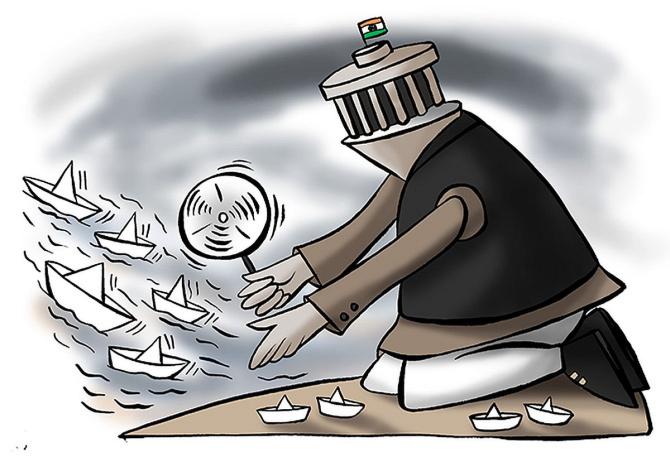Prices may go up because of higher energy costs, caused by the rise in shipping charges, with commercial vessels taking a longer route to avoid the troubled Red Sea region, the finance ministry said on Monday.

Iran-backed Houthi rebels of Yemen are repeatedly attacking ships in the Red Sea.
While the global economy is grappling with challenges such as sticky inflation, sluggish growth, and mounting fiscal pressure, India’s external sector could face “potential risks” due to the ongoing geopolitical tensions, according to the finance ministry’s report on the review of the Indian economy.
The Red Sea is vital for 30 per cent of global container traffic and 12 per cent of global trade.
As much as 80 per cent of India’s merchandise trade with Europe passes through it.
While freight and insurance premiums have risen, taking the Cape of Good Hope route has resulted in a longer transit time.
According to Nomura, so far, the automotive and retail sectors are most affected by shipping delays, with production cuts in the auto sector.
Europe is most impacted, given its dependence on Asia for supplies.

“The economic impact (on Asia) depends on the duration of these disruptions (which is uncertain) and whether it also extends to oil prices (not yet seen).
"We see some downside risks to near-term growth, due to higher import costs and delayed export shipments, as well as potential production delays, while firms may want to maintain higher inventory,” Nomura said in note.
Exports, balance on current account
The finance ministry further said though India’s export performance had been “remarkable” as outbound shipments hit a record high in the last two financial years, the pace of growth moderated in FY23 due to persisting geopolitical tensions, such as the Russia-Ukraine conflict.
The moderation further continued till November 2023 mainly on account of weaker global demand.
The share of exports in gross domestic product (GDP) is also estimated to moderate from FY23 to FY24, as a slowdown in global demand has led to a decline in the demand for India’s exports, it said.
“Despite global shocks, India’s merchandise trade balance improved markedly from a deficit of $189.2 billion in April-November 2022 to $166.4 billion in April-November 2023 as a result of the decline in imports,” the report said.
It further said a consistent rise in services exports as well as remittances had enabled India’s current account balance to remain within a “comfortable range”.
The current account deficit for the first half of FY24 dropped to $17.5 billion from $48.8 billion during the same period in the previous year, due to broad-based improvements in merchandise trade.
“Setting export targets and monitoring of these targets followed by course correction, provision of export credit insurance services for short-term as well as medium and long-term exports, encouraging banks to provide affordable and adequate export credit to MSME (micro, small, and medium enterprises) exporters, enabling them to explore new markets and diversify existing products competitively are some of the measures being taken towards this end,” the report said.
Investment
The finance ministry also said that the “subdued global trends” had resulted in a dip in foreign direct investment (FDI) into India, although the country continues to remain a preferred destination among investors due to its young workforce and a large middle-class population.
Amid continuous reforms in the FDI policy, along with a thrust on improving infrastructure and logistics and facilitating investments through schemes like production-linked incentives, the finance ministry expects the momentum of inflows will be sustained during the coming months.
“FPIs (foreign portfolio investors) turned net buyers in FY24 (till January 9, 2024) in contrast to the previous two financial years on the back of rising confidence in the prospects for the Indian economy and markets, supported by the stability in foreign exchange reserves and external debt position vis-a-vis other countries, among other factors,” it said, adding that growth in remittances was expected to be up to 8 per cent, taking remittance levels to $135 billion in 2024.
It said the stability of the rupee vis-a-vis other currencies during FY24, and easing inflationary pressures across the globe triggering expectations of rate cuts in future led FPIs to increase their exposure to Indian markets by $28.8 billion in the first half of FY24 from an outflow of $7.8 billion in first half of FY23.











